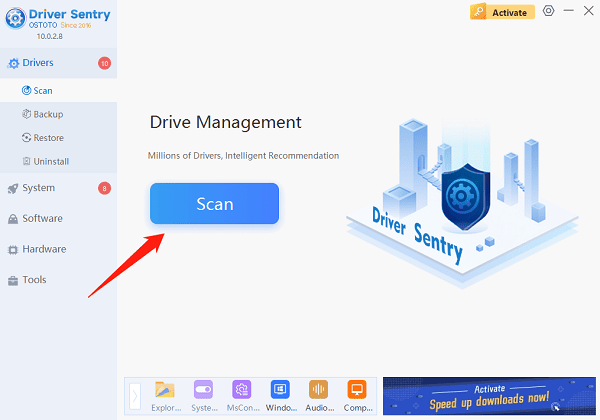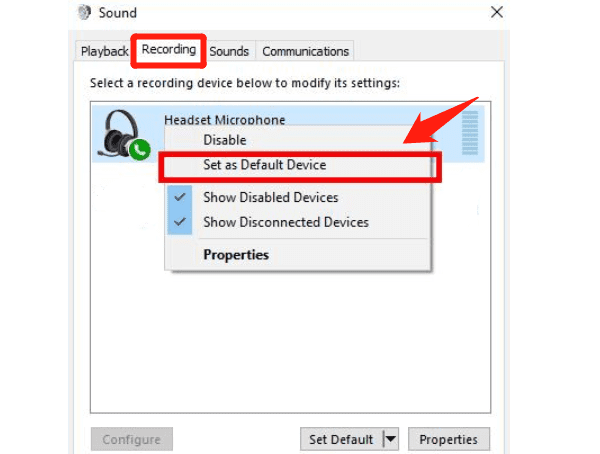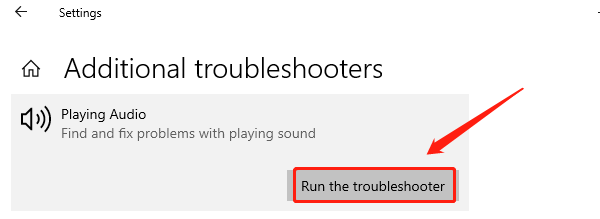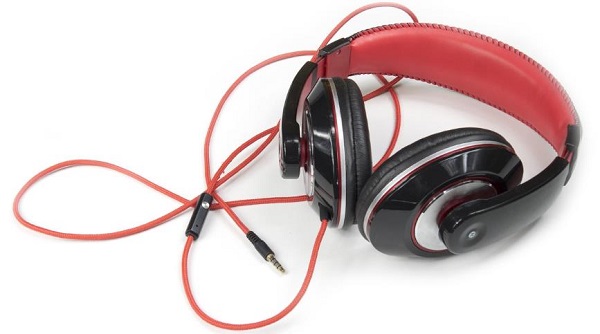
Sometimes, headphones may not work properly. This article offers effective solutions to help you quickly fix headphone issues and restore functionality.
1. Check Hardware Issues
Ensure the headphone jack is properly inserted into the headphone port (for wired headphones, check if it's firmly plugged in; for wireless headphones, verify the correct pairing with the device).
If possible, test the device with another pair of headphones to confirm if it's a headphone issue. If other headphones work properly, the original headphones may have a hardware fault.
Check "Volume Control" to ensure the correct audio output device is selected, making sure the audio output is set to headphones rather than another device.
2. Update Audio Drivers
Outdated or damaged audio drivers can cause headphones to malfunction. Keeping drivers up-to-date is essential for preventing such issues. We recommend using Driver Sentry to automatically detect and update drivers, saving time and avoiding the risk of installing incorrect drivers.
Click the download button to get the latest version of Driver Sentry. After installation, open the software and click "Scan".

Once the scan is complete, you'll see drivers that are missing or need updating. Locate the audio driver in the list and click "Upgrade".
After updating, restart the computer to ensure the new driver works properly.
3. Restart the Device
Sometimes, system or software issues may prevent headphones from working. A simple restart can often resolve temporary system errors or conflicts.
If you're using Bluetooth or wireless headphones, try turning the headphones off, wait a few minutes, and then turn them back on. Alternatively, disconnect them from the device and reconnect.
4. Check Device Settings
Check Volume Settings:
Ensure the computer volume is not muted, and the volume slider is up.
Also, check the headphone volume control to ensure it's not muted or set too low.
Set Default Device:
If your headphones appear in the "Playback Devices" list but aren't set as the default device, right-click the headphones and select "Set as Default Device".

Check Playback Devices:
In Windows, right-click the volume icon in the taskbar, select "Playback Devices" or "Sound Settings", and make sure the default playback device is set to headphones. If the headphones don't appear, you may need to reconnect them.
5. Run Audio Troubleshooter
Go to "Settings", click "Troubleshoot", then select "Other Troubleshooters".
In the list, select "Playing Audio" and click "Run the troubleshooter".

The system will automatically detect and fix any audio-related issues.
Follow the prompts; the system may suggest updating drivers or restarting audio services based on the detected issues.
6. Try Other Ports or Devices
If using wired headphones, try plugging them into a different port on the computer (e.g., if using the front port, try the back port) and check for any damage or looseness in the port.

If possible, test the headphones on another device (e.g., a phone, another computer, or tablet) to confirm they work properly. If the headphones don't work on other devices, it may be an issue with the headphones themselves.
7. Check for Windows Updates
Click the "Start" button, select "Settings", and go to "Update & Security".
Under the "Windows Update" tab, click "Check for updates". If there are any available system updates, click "Install" to proceed.
After updating, restart your computer and check if the issue is resolved.
These steps can help troubleshoot and resolve headphone or audio issues on Windows systems. If the problem persists, further hardware or system repair may be necessary.
See also:
Fix a Crashed Windows Computer
8 Methods to Fix Windows 10 Taskbar Not Working